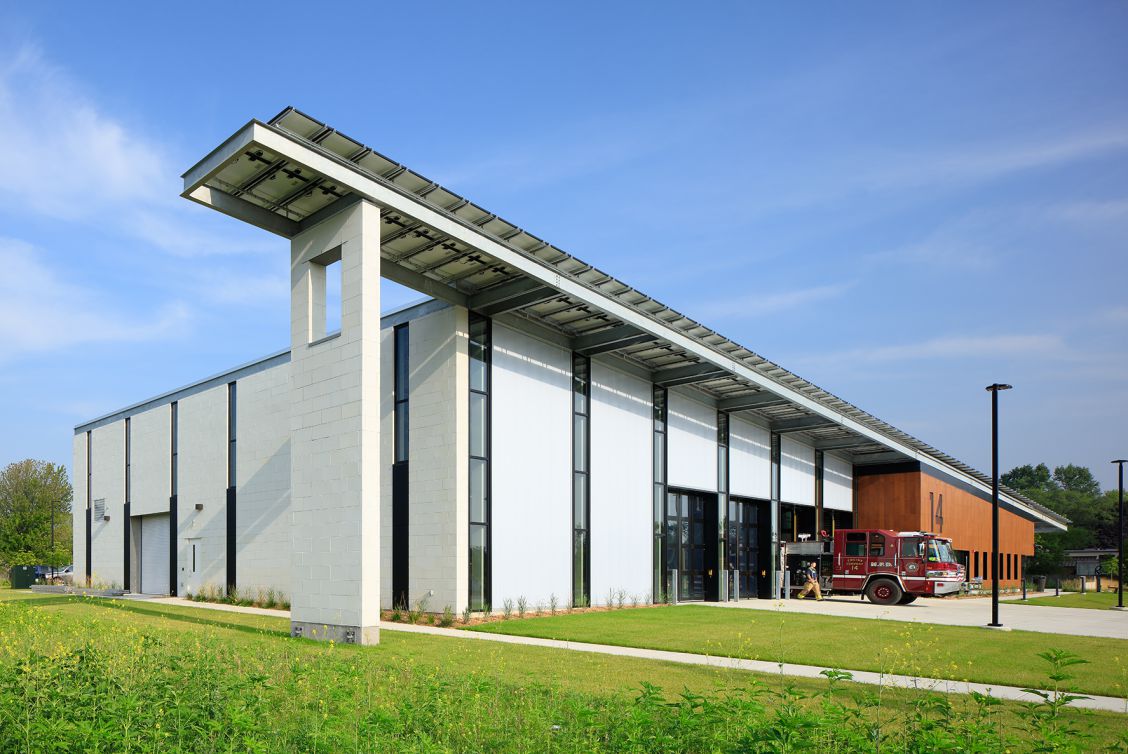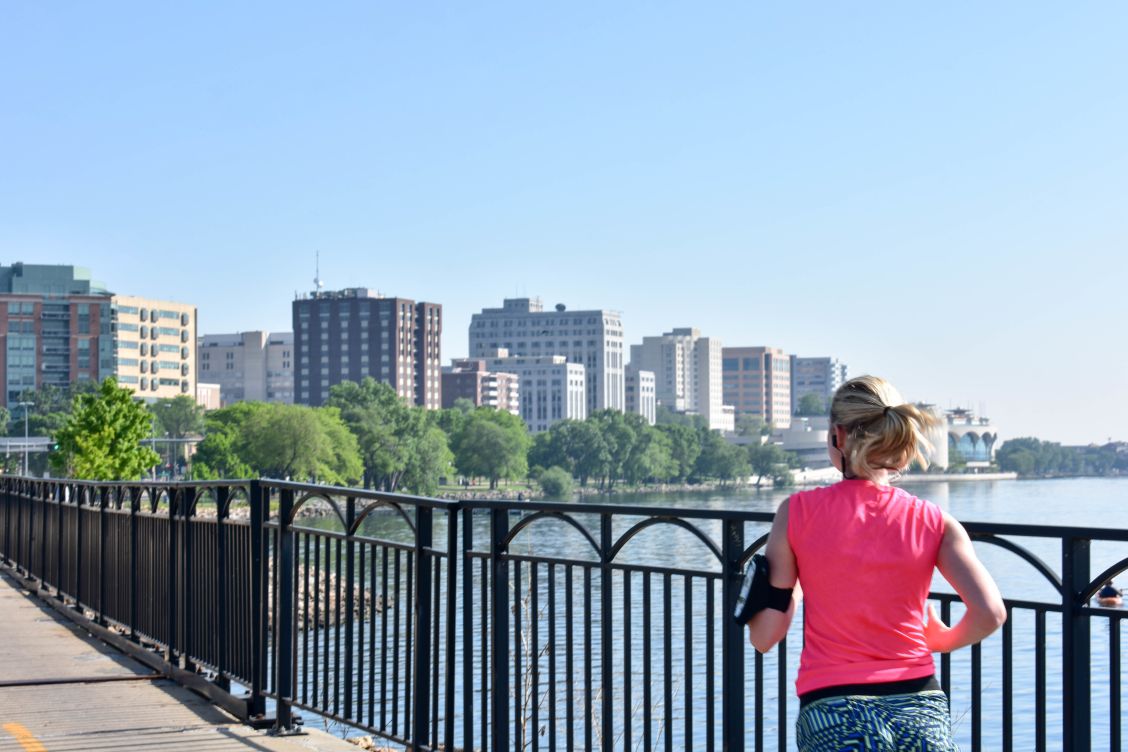Buildings
Energy Efficient City Facilities
The City of Madison is taking action to improve energy efficiency and reduce greenhouse gas emissions from our own facilities. To better manage facility energy consumption, we have been benchmarking and reporting all building energy performance since 2015, and we share this information on our Energy Dashboard.
We uses this benchmarking information to stay on top of our energy use, identify opportunities to save energy and money, and validate impacts of energy-efficient decisions. In the last ten years, the city has invested roughly $250,000/year in energy efficiency improvements, including operations changes, transitioning to LED lighting, upgrades to HVAC equipment and more. And we regularly tune up our buildings to make sure they're operating well - over the last 5 years, facilities staff have tuned up libraries, major Parks and Water Utility facilities, as well as Police and Fire Stations. Check out the Engineering Division's Energy page for more details on how the our Facilities Team is leading on energy efficiency.
All new City facilities are designed, contracted, and built to achieve at least Leadership in Energy and Environmental Design (LEED) Silver certification by the U.S. Green Building Council. Fourteen City facilities have achieved LEED Certification, and 6 facilities are in the process of being certified. Check out the Facilities Team LEED page to learn more about the City's work to be a leader in green building practices and a full list of City LEED certified buildings.

Better Climate Challenge
In 2022, the City of Madison joined the U.S. Department of Energy's Better Climate Challenge and committed to reduce greenhouse gas emissions from our facilities by at least 50% and improving energy efficiency by 25% across our portfolio of facilities over the next 10 years. To achieve this goal, the City will continue and accelerate the work to maximizing energy efficiency, install renewable energy systems, and utilize other innovative technologies to decarbonize our 70+ buildings and facilities. We are one of more than 80 organizations across the U.S. economy that are stepping up to the Challenge and driving real-world action toward a low-carbon future.
Microgrid Feasibility Study
With support from the Wisconsin Public Service Commission's Office of Energy Innovation (OEI), the City is working with Slipstream and Madison Gas and Electric to complete a feasibility study for converting two adjacent city-owned facilities into an interconnected microgrid, enhancing the existing backup generators and solar photovoltaic (PV) system with the addition of battery energy storage, additional solar, and the necessary controls hardware. These facilities house the streets division and engineering operations and are city headquarters for City services. These changes would enhance the resilience of these buildings to power outages while also reducing electric costs and greenhouse gas emissions. Check out the other projects around the state funded by OEI's Critical Infrastructure Microgrid and Community Resilience Center Pilot Grant Program funds.
Grid Interactive Efficient Buildings Pilot
Through a grant from the U.S. Department of Energy (DOE) Connected Communities initiative, the City is partnering with Slipstream and Madison Gas and Electric on a pilot program for creating grid-interactive efficient buildings. This project will demonstrate how we can reduce energy use and greenhouse gas emissions across the building sector while transitioning to a cleaner electric grid. Check out this press release to learn more.

Advancing Energy Efficiency Buildings Community Wide
Madison cannot achieve our climate goals through action at City facilities alone. It is critical that the whole community be part of the climate solution.
Residential Buildings
Energy Efficiency for Naturally Occurring Affordable Housing
The Efficiency Navigator program helps small to medium-sized multi-family housing become more efficient and resilient, while reducing operating costs and utility bills for residents. The program provides complimentary efficiency assessments and step-by-step technical assistance to help building owners navigate implementation of efficiency improvements. Eligible buildings have rents affordable to residents at or below 80% Area Median Income. This housing stock is known as naturally occurring affordable housing (NOAH).The Efficiency Navigator program is also conducting a pilot grant program to fund efficiency upgrades in NOAH in Madison’s Northside and Southwest neighborhoods. Selected buildings will receive $10,000 - $20,000 in funding for upgrades such as efficient lighting, improved heating, ventilation and air conditioning systems, improved insulation, air sealing, water softener optimization, tune-ups or replacement, water conserving fixtures, and recommendations to improve home health (e.g. asthma triggers). See the Efficiency Navigator website for more details and to apply.
The Efficiency Navigator pilot grant program is a partnership between Sustain Dane, Elevate, the Northside Planning Council, and the City of Madison.
Commercial Buildings
Building Energy Savings Program
The City of Madison recently adopted the new Building Energy Savings Program to help large commercial building owners identify opportunities to increase energy efficiency, save money, and reduce the carbon footprint of their buildings, which currently account for 30% of community-wide greenhouse gas emissions. More than 40 other cities, counties, and states have established policies focused on improving energy efficiency in existing buildings. Visit the Building Performance Policy Center for additional information and a map summarizing adoption of these policies across the U.S.
The new Building Energy Savings code aims to improve energy efficiency in large commercial buildings community-wide through energy benchmarking and tune-ups. Under the new code, non-residential commercial buildings 25,000 square feet and larger are required to benchmark energy use annually via EPA's ENERGY STAR Portfolio Manager. Non-residential commercial buildings 50,000 square feet and larger are also required to complete a building tune-up every four years.
Energy benchmarking is simply measuring and tracking annual energy use. Importantly, benchmarking does not require a building to meet a prescribed level of energy use. Rather, the information that benchmarking provides helps building owners and managers make more informed decisions about building operations and actions to save energy and money. Research by U.S. EPA shows that buildings that benchmark their energy use see an average annual energy savings of 2.4% per year that accrues over time, resulting in an 8 to 10% total reduction in annual energy use.
Similar to tuning up a car, building tune-ups check and adjust building energy systems, like lighting and HVAC controls, once every four years to make sure existing systems are performing at their best without wasting energy. For a tune-up, a qualified professional, which could be current building staff, assesses a building’s existing energy systems, controls, and maintenance practices and performs no- to low- cost operational adjustments, maintenance, or minor repairs that improve system performance and save energy. Importantly, tune-ups are not focused on major upgrades to buildings or building equipment. Rather, tune-ups aim to ensure the existing equipment is running as intended. Meta-analysis by Pacific Northwest National Laboratory (PNNL) found that tune-ups result in a median annual energy savings of 12%.
Benchmarking and tune-ups save energy, reduce utility bills, provide a more comfortable space for occupants, and reduce carbon and air pollution that negatively impact public health and the environment. Reducing annual energy use in buildings covered by this program by 10 to 15% will cut carbon emissions by an estimated 91,257 to 136,886 tons per year. That’s the equivalent of taking 17,838 to 26,757 cars off the road.
And the Building Energy Savings Program is more than just the new code. The program will provide the training, support, and information that building owners need to benchmark and tune up as well as take the next steps to turn building efficiency knowledge into action, including free trainings, a Help Desk, customized reports and recommendations for building owners and managers, and information on resources building owners can leverage to improve energy performance such as rebates, incentives, and financing from across local, state, and federal sources.
The City of Madison is working to launch the new program. News and information about the program will be included here. Check out the FAQ for detailed answers to many of the most common questions about the program, and reach out to the Sustainability and Resilience team for more information.
Program Materials
| Building Energy Savings code March 7, 2023 |
Adopted Code Staff Memo |
| Frequently Asked Questions (FAQ) July 14, 2023 |
BESP FAQ |
| Two-Page Program Summary March 3, 2023 |
BESP Summary |
Focus on Energy
Focus on Energy, Wisconsin’s state-wide energy efficiency and renewable resource program, provides resources and financial incentives to help individuals, businesses, municipalities, and non-profits implement energy efficiency and renewable energy projects. Visit Focus on Energy's website to learn more about the many programs and products they offer.
